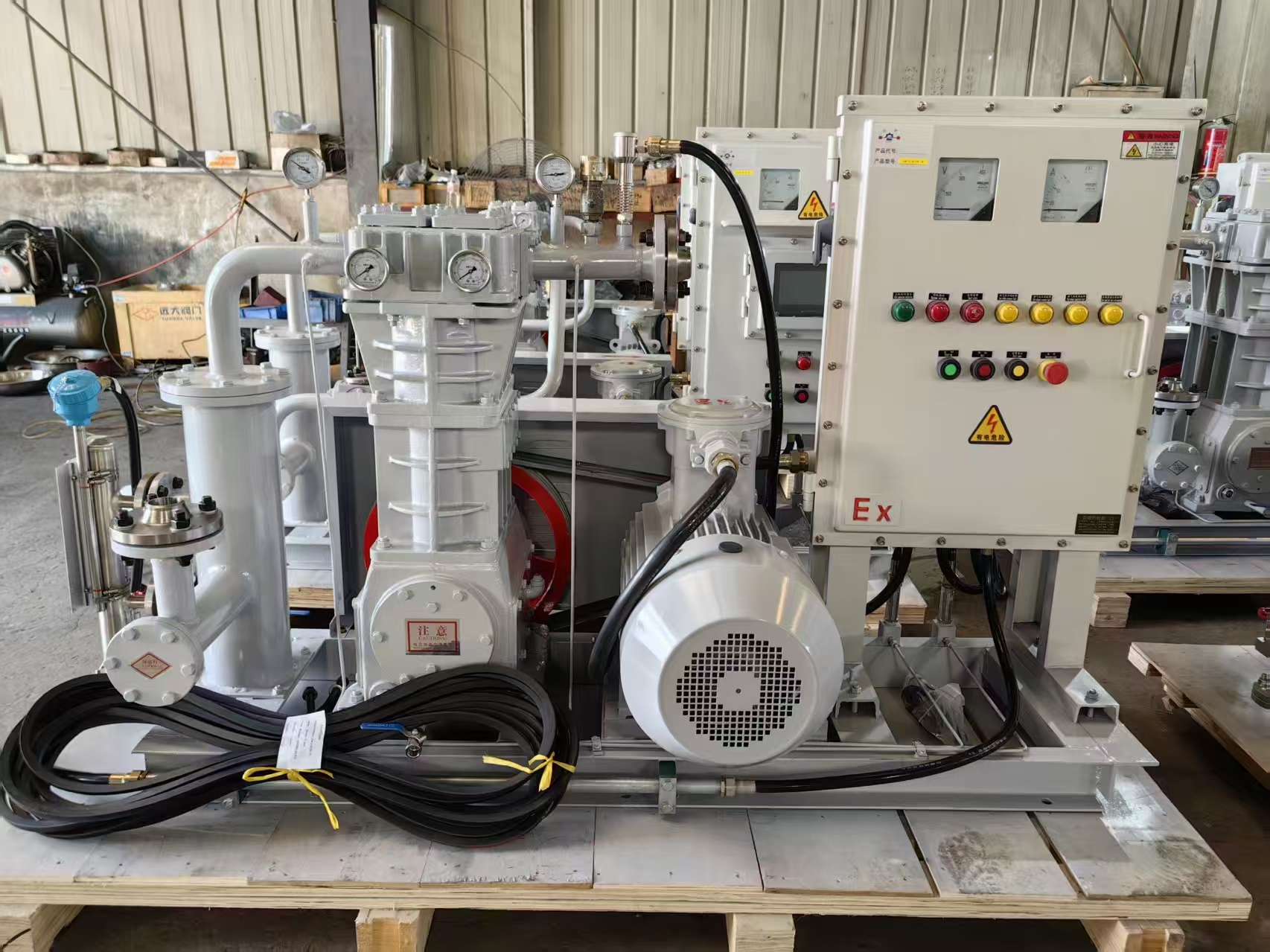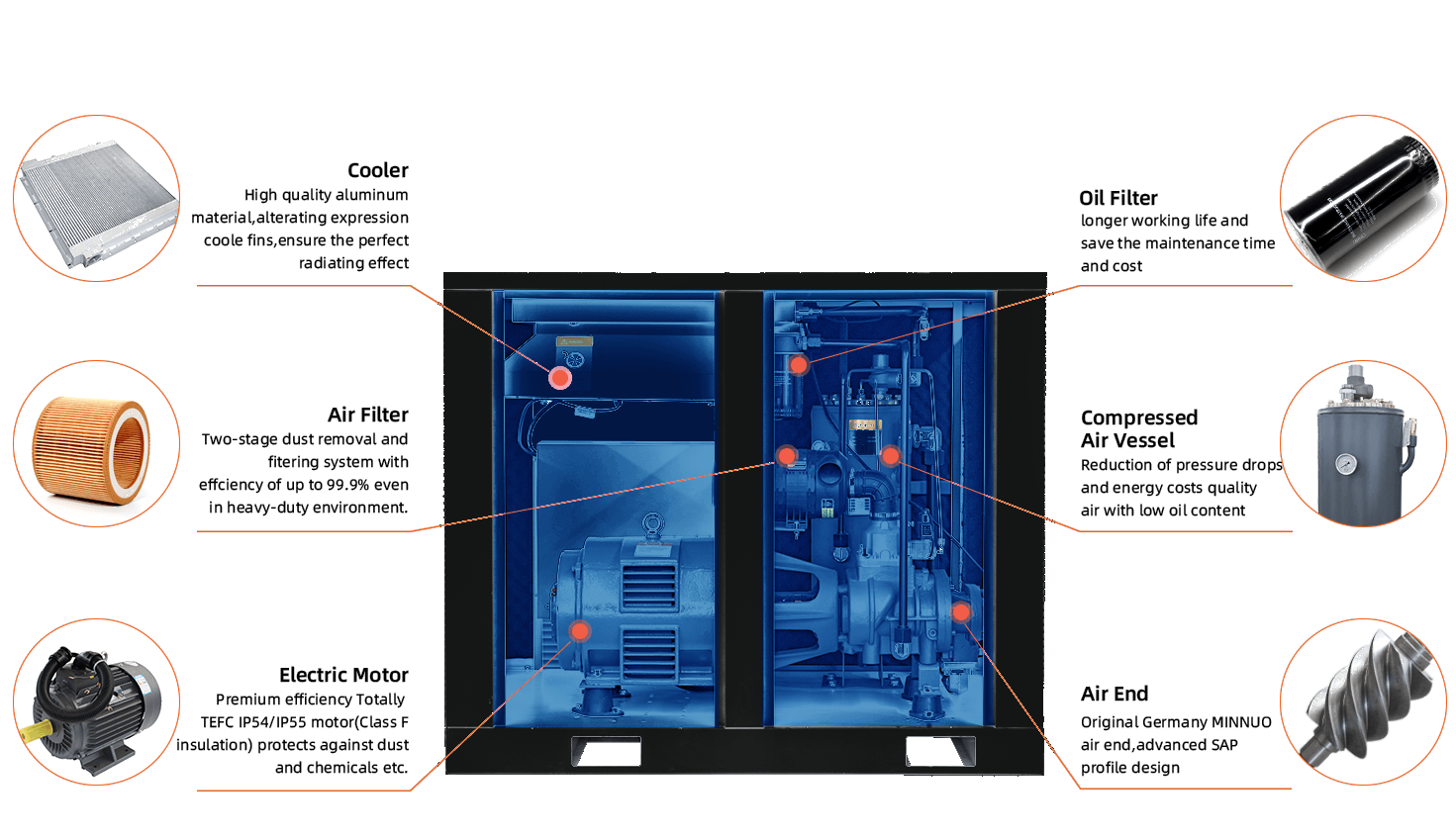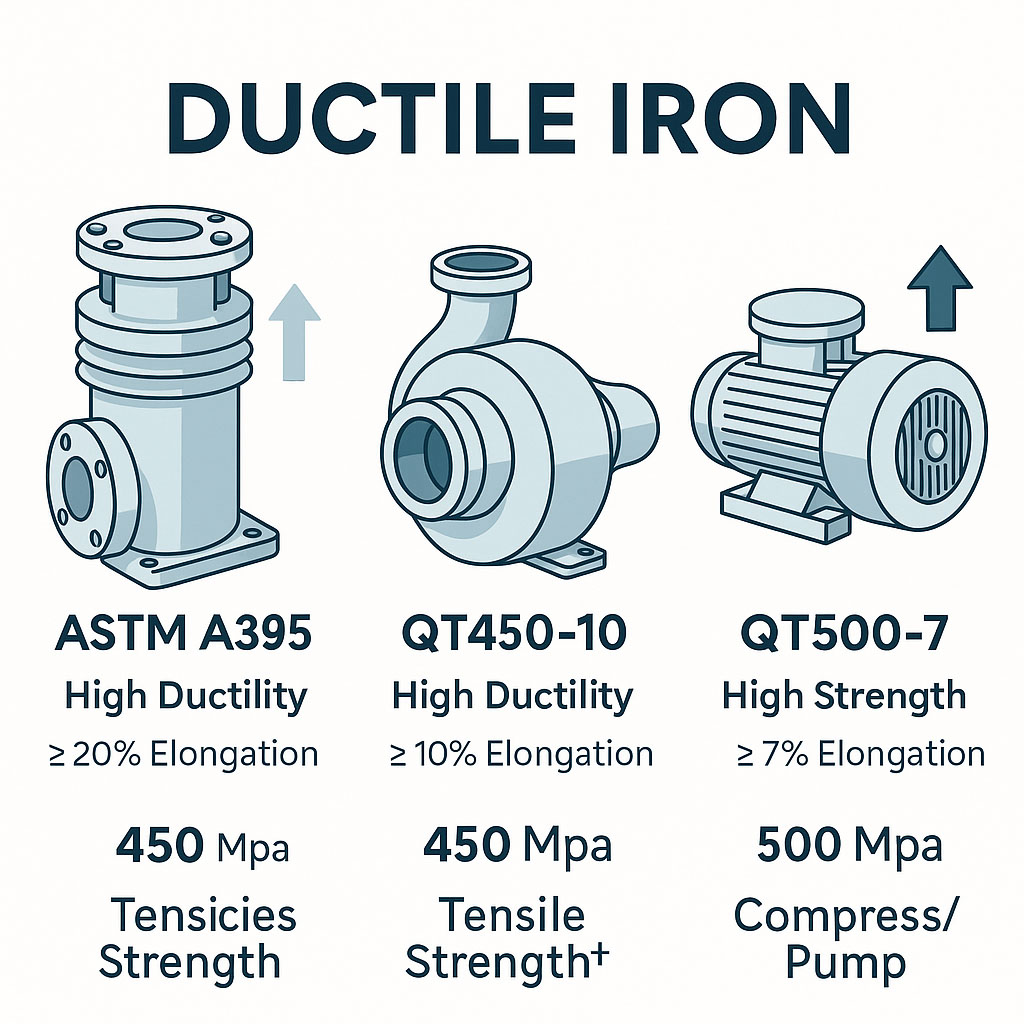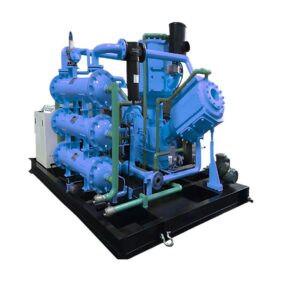Quando si cercano i compressori d'aria, è probabile che ci si imbatta sia in SCFM e CFM. Sebbene possano sembrare simili, il differenza tra SCFM e CFM possono avere un impatto significativo sulle prestazioni del compressore, soprattutto in ambito industriale. In questa guida, analizzeremo entrambi i termini e spiegheremo come influiscono su efficienza del compressore, capacità del compressore d'ariae le prestazioni delle apparecchiature nel mondo reale.
💡 Cosa significa CFM?
CFM, o Piedi cubi al minutomisura il volume d'aria effettivo erogato da un compressore d'aria nelle condizioni attuali. Varia con le variazioni di:
-
Temperatura
-
Pressione
-
Umidità
Ad esempio, un compressore potrebbe produrre 100 CFM a 6 bar in condizioni ambientali di 25°C. Tuttavia, questo dato è rilevante solo per quell'ambiente specifico.
📐 Cos'è l'SCFM e perché è standardizzato?
SCFM sta per Piedi cubi standard al minuto. A differenza del CFM, misura il flusso d'aria in condizioni fisse e standard:
-
Pressione: 14,7 psi
-
Temperatura: 68°F (20°C)
-
Umidità: 36% umidità relativa
Essendo normalizzato, l'SCFM consente un confronto accurato tra diversi tipi di tipi di compressori d'ariaindipendentemente dalla posizione o dall'applicazione.
✅ Per esempio, un KEEPWIN compressore d'aria scfm con 15 SCFM a 8 bar, garantisce lo stesso flusso d'aria in uscita sia che vi troviate in Turchia, in India o negli Stati Uniti.
⚙️ Perché è importante la differenza tra SCFM e CFM?
Quando si dimensiona un sistema, capacità del compressore d'aria deve corrispondere alla richiesta d'aria degli utensili o della linea di processo. Se ci si basa solo sui CFM, si rischia di sovrastimare o sottostimare la portata del compressore.
Implicazioni chiave:
-
I compressori sottodimensionati causano cali di pressione e tempi di inattività
-
Le unità sovradimensionate sprecano energia e aumentano i costi operativi
-
SCFM garantisce un'accurata corrispondenza delle apparecchiature e una migliore efficienza del compressore
🔍 Esempio del mondo reale da Keepwin
In un recente progetto, un cliente del settore farmaceutico mediorientale aveva bisogno di un amplificatore di azoto oil-free per strumenti di precisione. Inizialmente il team ha calcolato il flusso d'aria in CFM, il che ha portato alla scelta di un modello più piccolo.
Dopo aver consultato Keepwin, abbiamo ricalcolato utilizzando SCFM, rivelando un gap di flusso di 12%. La selezione rivista è stata la nostra Compressore a membrana GV-15/220che fornisce 6 Nm³/h (~3,5 SCFM) a 220 bar. Questa regolazione ha garantito una pressione stabile e ha evitato il rifiuto dei lotti di prodotto.
Sintesi del confronto: SCFM vs CFM
| Aspetto | CFM | SCFM |
|---|---|---|
| Dipende dall'ambiente | Sì (pressione, temperatura, umidità) | No (condizioni standardizzate) |
| Utilizzato per gli strumenti di dimensionamento | Non è affidabile senza contesto | Sì - ideale per calcoli precisi |
| Comuni nel marketing | Spesso elencati nelle specifiche del catalogo | Preferenza per la progettazione ingegneristica |
| KEEPWIN Utilizza | Entrambi (chiaramente etichettati su tutti i modelli) | Entrambi (per la precisione e l'uso globale) |
🧠 Pensieri finali
Comprendere il differenza tra SCFM e CFM è essenziale quando si sceglie o si confronta tipi di compressori d'aria. Mentre i CFM indicano l'attività del compressore in questo momento, SCFM vi dice cosa è in grado di fare in condizioni standard. Entrambi sono utili, ma solo se applicati correttamente.
Quindi, sia che stiate acquistando un compressore d'aria scfm o valutare efficienza del compressoreAssicurarsi di utilizzare SCFM per la pianificazione e CFM per il monitoraggio in tempo reale.
📩 Avete bisogno di aiuto per scegliere il compressore d'aria giusto?
👉 Contatto Keepwin Technology Hebei Co., Ltd. a keepwin@keep-win.com
🌐 Visita www.keep-win.com per saperne di più.











